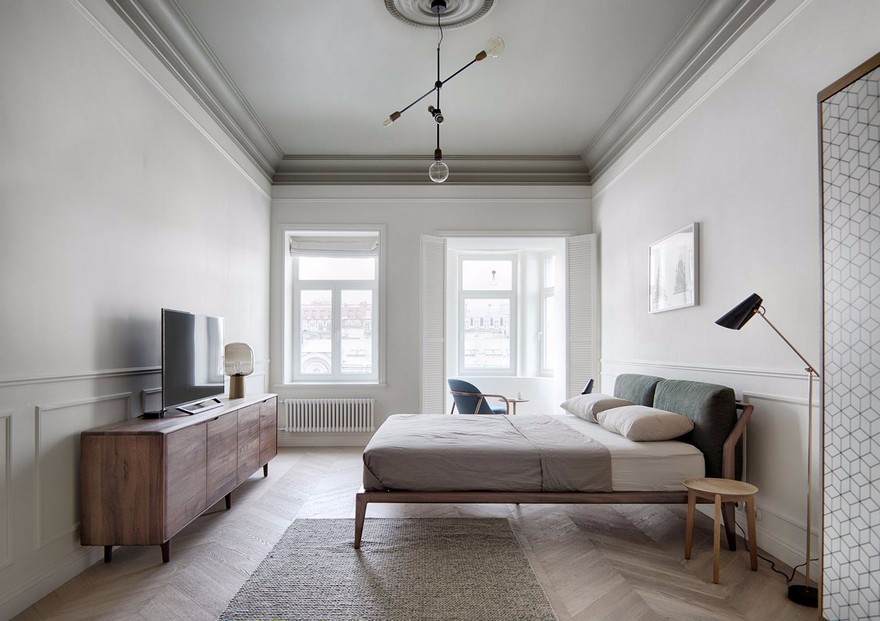RIA Rural Ludens + R arquitectos
2013-03-28 01:00
Project – architecture as an educational tool:
RIA农村项目(Red de Innovión y Apridizaje)被设想为一种模式,可以在墨西哥各地加以调整和复制。位于景观中的三堵墙组织了这个项目。第一堵墙包括行政程序,第二堵墙包括教育方案,第三堵墙所考虑的是服务和更灵活的方案,以满足每个社区的具体需要。
The RIA rural Project (Red de Innovación y Aprendizaje) is conceived as a model that could be adapted and reproduced throughout Mexico. Three walls positioned within the landscape organize the program. The first wall contains the administrative program, the second wall contains the educational programs, and the third wall contemplates contains the services and a more flexible program that responds to specific needs of each community.
Model for reproduction – flexibility of a diagram
这个模型被设想成一个Venn图,每一堵墙都会产生一个行动无线电。每道墙的布置、延伸和定位都要根据每一地点进行调整,而不会失去总体方案。因此,该模型允许从一个站点到另一个站点,从一个社区到另一个社区的具体响应,而不丢失模型的一般空间组织。
The model is conceived like a Venn diagram, where each wall generates a radio of action. The placement, extension and orientation of each wall adjust to each site without losing the general scheme. As a result, the model allows for specific response from site to site, from community to community, without losing the general spatial organization of the model.
Materiality – hard and soft
然后用每个位置可用的材料填充混凝土框架,产生每一堵墙。然后用较轻的材料(木材和塑料)将程序附加到墙壁上。其结果是一种骨骼结构,给学校提供了它的结构,再加上一种可以生长或被移除的肌肉结构是学校所需要的。
Concretes frames that are then refilled with the materials available in each location generate each wall. Programs are then attached to the walls in lighter materials (wood and plastic). The result is an architecture of bones that give the school its structure, plus an architecture of muscles that can grow or be removed is the school requires it.
由于该项目位于农村地区,因此景观被视为不可或缺的教育工具。利用Venn图的重叠,每个墙生成一个扩展的程序,与其他墙壁的程序重叠。因此,行政墙向服务墙扩展,以建立一个非正式礼堂;服务墙向教育墙延伸,创建一个园艺花园;教育墙向行政墙生成一个开放空间,既可用作扩建的教室,也可用作门廊。
As the project is located in rural areas, the landscape is considered and approached as an indispensable educational tool. Taking advantage of the Venn diagram overlap, each wall generates an extended program that overlaps the program of the other walls. In consequence, the administrative wall expands towards the service wall to create an informal auditorium; The service wall extends towards the educational wall to create a horticultural garden; The educational wall generates towards the administrative wall an open space that can be used as an extended classroom while also working as a vestibule.
第一个中心建在墨西哥州的San Felipe del Progreso。场地面积四百平方米,建筑二百四十平方米。大部分使用的材料是根据当地的可用性而选择的,所使用的建筑系统是从当地自行建造的建筑中挑选出来的。墙壁上充满了水泥块,并涂上了白色石膏(就像该地区的大多数建筑一样)。地板是由空旷地区的红砖和教室里的混凝土制成的。教室的墙壁是由半透明和起伏的塑料制成的,天花板上集成了自然通风。浴室不用水就能工作。这些家具是通过重复使用用来铸造墙壁框架的木头制成的。社区计划被纳入这个特定的中心,由一个泥和沙炉组成,在一个以当地美食闻名的地区促进低能耗。
The first center was constructed in San Felipe del Progreso, in the State of Mexico. The site has a surface of four hundred square meters with two hundred and forty of them constructed. Most materials used were selected for their local availability and the construction systems applied are taken from local self-made constructions. The walls were filled with cement blocks and painted with white gypsum (like most constructions in the area). The floor is made out of red brick in open areas and concrete in classrooms. The classrooms walls are made out of translucent and undulated plastic with natural ventilation integrated on the ceilings. Bathrooms work without water. And the furniture was made by reusing the wood used for the casting of the walls’ frames. The communitarian program incorporated into this particular center consists of a mud and sand stove that promotes low energy consumption in an area known for their local cuisine.
 举报
举报
别默默的看了,快登录帮我评论一下吧!:)
注册
登录
更多评论
相关文章
-

描边风设计中,最容易犯的8种问题分析
2018年走过了四分之一,LOGO设计趋势也清晰了LOGO设计
-

描边风设计中,最容易犯的8种问题分析
2018年走过了四分之一,LOGO设计趋势也清晰了LOGO设计
-

描边风设计中,最容易犯的8种问题分析
2018年走过了四分之一,LOGO设计趋势也清晰了LOGO设计
.jpg)



.jpg)

.jpg)

.jpg)

.jpg)

.jpg)

.jpg)

.jpg)

.jpg)

.jpg)


























.jpg)








